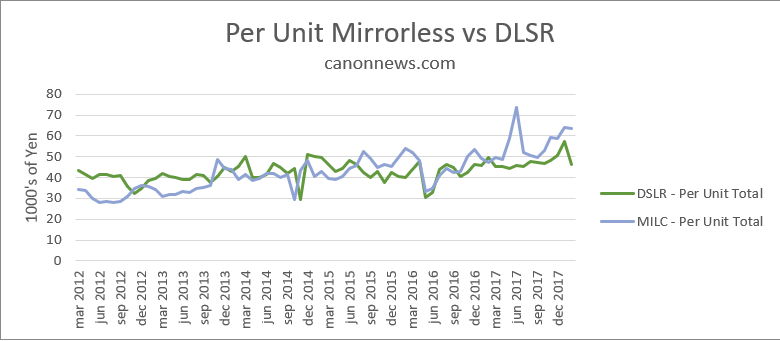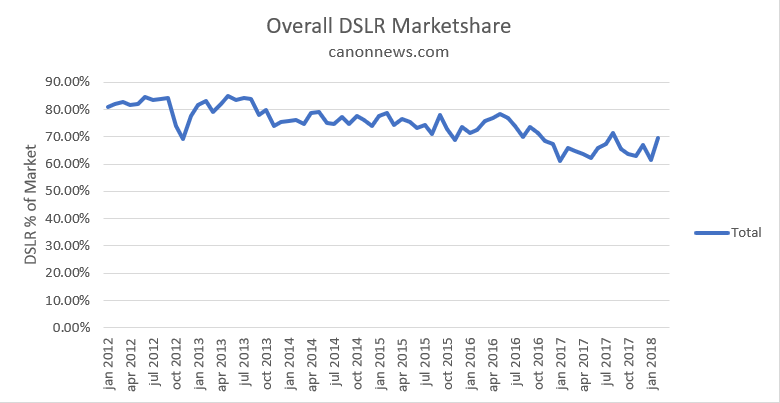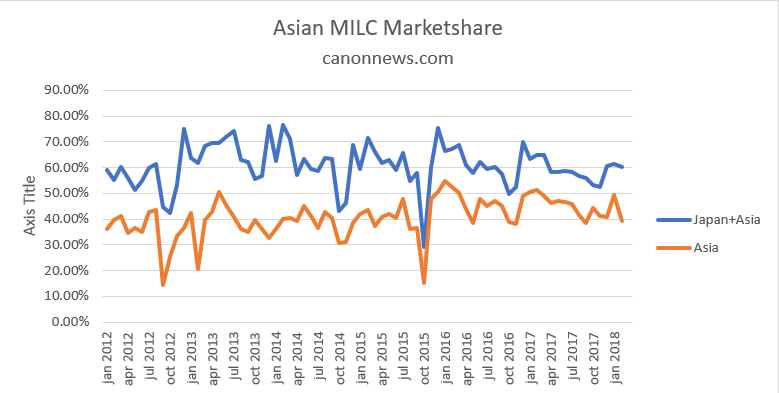HTML:
Having just posted CanonNew’s analysis and breakdown of the CIPA results, I really don’t know what to write here on Canon Rumors.</p>
<p>If you want to really see what I say about the data, go over to <a href="https://www.canonnews.com/february-2018-cipa-results-and-analysis">CanonNews</a>. Shameless plug? You betcha.</p>
<p>In summary though;</p>
<ol>
<li>Yes it was a good month, especially for DSLR’s that outpaced mirrorless overall for the month.</li>
<li>Results aren’t as good as they appear, partly due to the fact of what I believe is Canon mass shipping all those little rebels that came out.</li>
</ol>
<p>A main take away point;</p>
<blockquote><p>A proper correction month would have had February 2018 sales still under that of this month last year, and most likely continuing for March.
This could mean that outside forces such as new releases have increased sales especially of DSLR’s over that period. This may have well have happened as Canon released their low end products earlier this year, which would have been mass shipped to retailers in February.</p>
<p>This we see in more clarity when we look at the per unit values for mirrorless and DSLR. Where the mirrorless values remain consistent, in February, we see a fairly dramatic shift to a lower unit value for DSLRs; meaning there was a higher amount of low value units shipped in February.</p></blockquote>
<p> </p>
<span id="pty_trigger"></span>


